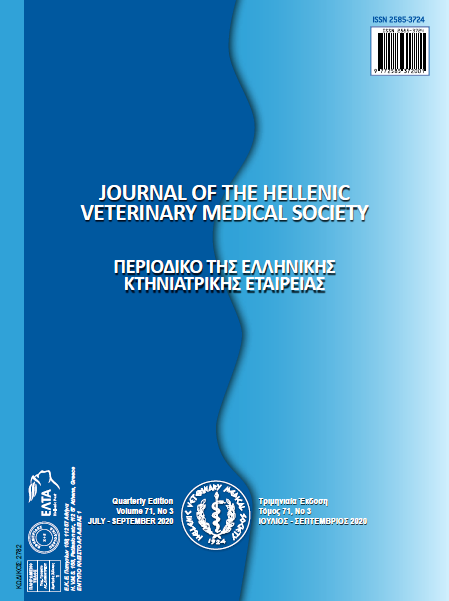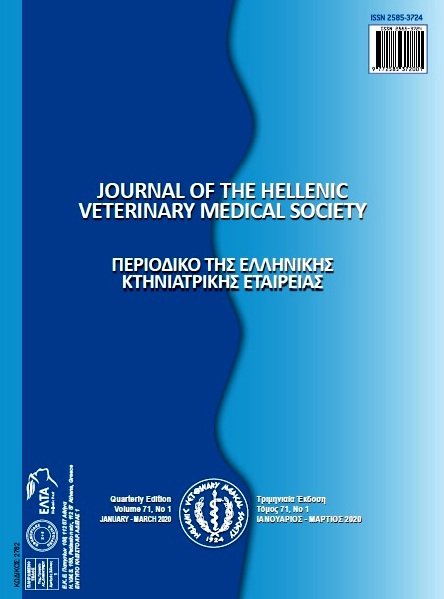Biochemical composition and biometric parameters of Mytilus galloprovincialis from Boka Kotorska Bay in Southern Adriatic Sea
Abstract
This study reports, for the first time, different physico-chemical analyses, of Mediterranean mussels (Mytilus galloprovincialis) from harvesting areas in the Montenegro coast of the Adriatic Sea, in order to evaluate the influence of origin on different parameters and assessed the quality of shellfish grown in this area. The Boka Kotorska Bay is situated in Montenegro, in the south-eastern part of the Adriatic Sea The mussel samples were collected at the same time in the spring of 2019 at six locations in Boka Kotorska Bay, Montenegro: Kotor and Tivat Bays. Biometric parameters, percentage of meat, condition index, proximate composition, sensory evaluation and lipid profiles of mussels were studied. The concentrations of some micro and macro elements and heavy metals in mussels, were also analyzed. Significant differences were found between mussels from different locations. Mean biometric parameters of mussels grown in Sv.Nedjelja, were considerably higher than in mussels grown elsewhere.. Protein, lipid, ash and glycogen content were varied from 7.80 to 10.26%; 1.36 to 2.18%; 1.73 to 3.34% and 12.81 to 15.38%, respectively. Gas chromatographic analysis showed that polyunsaturated fatty acids (PUFAs) were dominant lipids in mussels (37.56 to 41.08%), followed by monounsaturated (MUFAs) (30.52 to 38.31%) and saturated (SFAs) (21.89 to 29.45%) fatty acids. Fatty acid profiles were investigated and revealed high contents of n-3 PUFAs and high n-3/n-6 ratios in all mussels from Montenegro In the mussel samples high concentrations of K, Mg, Ca, and Na, and much lower concentrations of Fe, Mn, Zn, and Cu were found. Some of toxic elements (As, Pb, Hg and Cd) were determined also.. The qualitative sensory assessment showed that all mussels were acceptable. All mussels in the current study achieved scores of 3 or more out of 5 in the qualitative category. Data on biochemical composition and quality indices of the mussels cultured in the Boka Kotorska Bay demonstrated that these products could be accepted well by consumers and could compete with other currently available mussels from other locations in Adriatic Sea.
Article Details
- Come citare
-
GRKOVIĆ, N., TEODOROVIĆ, V., DJORDJEVIĆ, V., KARABASIL, N., STAJKOVIĆ, S., VASILEV, D., ZUBER BOGDANOVIĆ, I., JANKOVIĆ, S., VELEBIT, B., & DIMITRIJEVIĆ, M. (2020). Biochemical composition and biometric parameters of Mytilus galloprovincialis from Boka Kotorska Bay in Southern Adriatic Sea. Journal of the Hellenic Veterinary Medical Society, 71(3), 2338–2348. https://doi.org/10.12681/jhvms.25095
- Fascicolo
- V. 71 N. 3 (2020)
- Sezione
- Research Articles

Questo lavoro è fornito con la licenza Creative Commons Attribuzione - Non commerciale 4.0 Internazionale.
Authors who publish with this journal agree to the following terms:
· Authors retain copyright and grant the journal right of first publication with the work simultaneously licensed under a Creative Commons Attribution Non-Commercial License that allows others to share the work with an acknowledgement of the work's authorship and initial publication in this journal.
· Authors are able to enter into separate, additional contractual arrangements for the non-exclusive distribution of the journal's published version of the work (e.g. post it to an institutional repository or publish it in a book), with an acknowledgement of its initial publication in this journal.
· Authors are permitted and encouraged to post their work online (preferably in institutional repositories or on their website) prior to and during the submission process, as it can lead to productive exchanges, as well as earlier and greater citation of published work.




